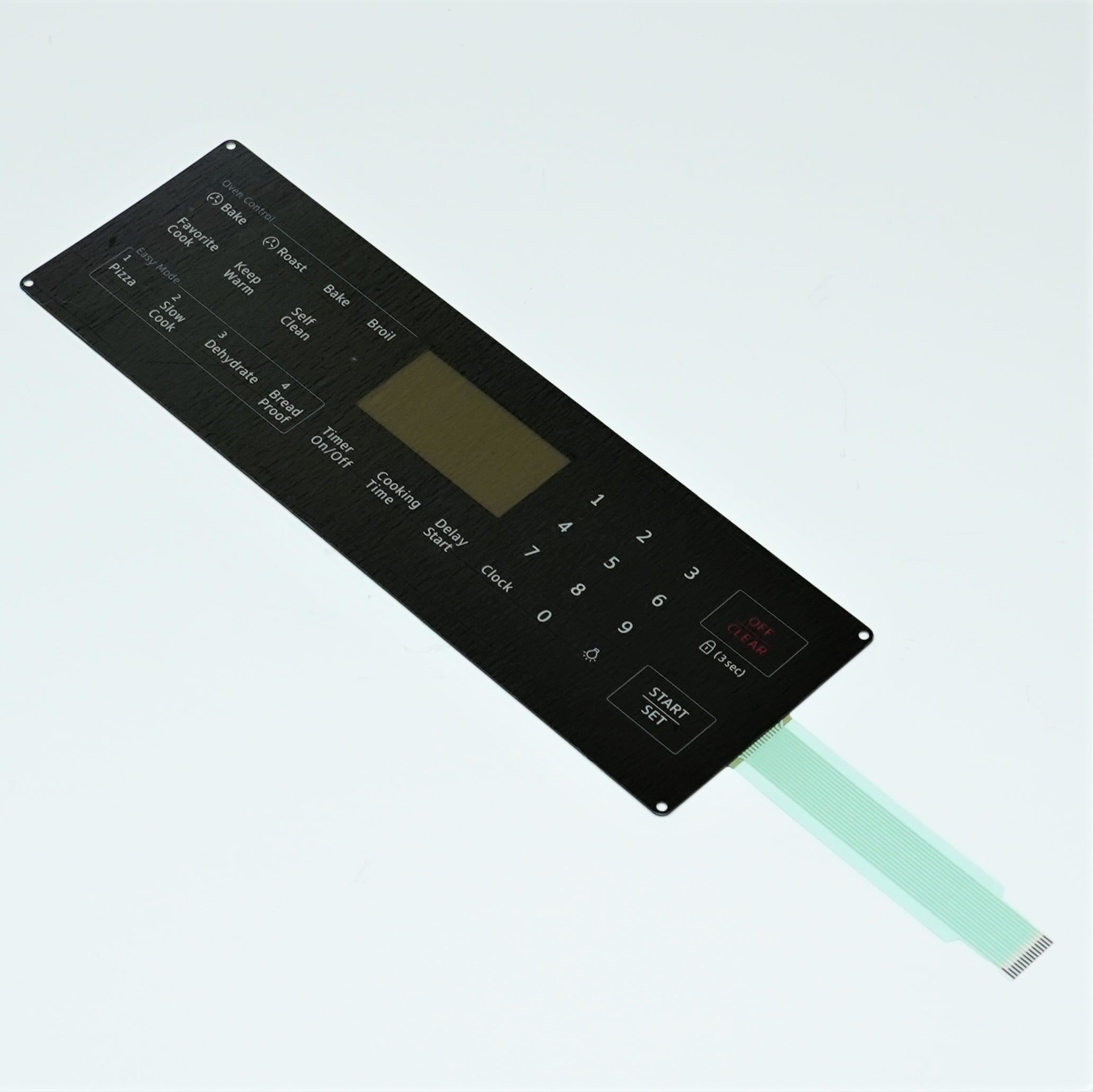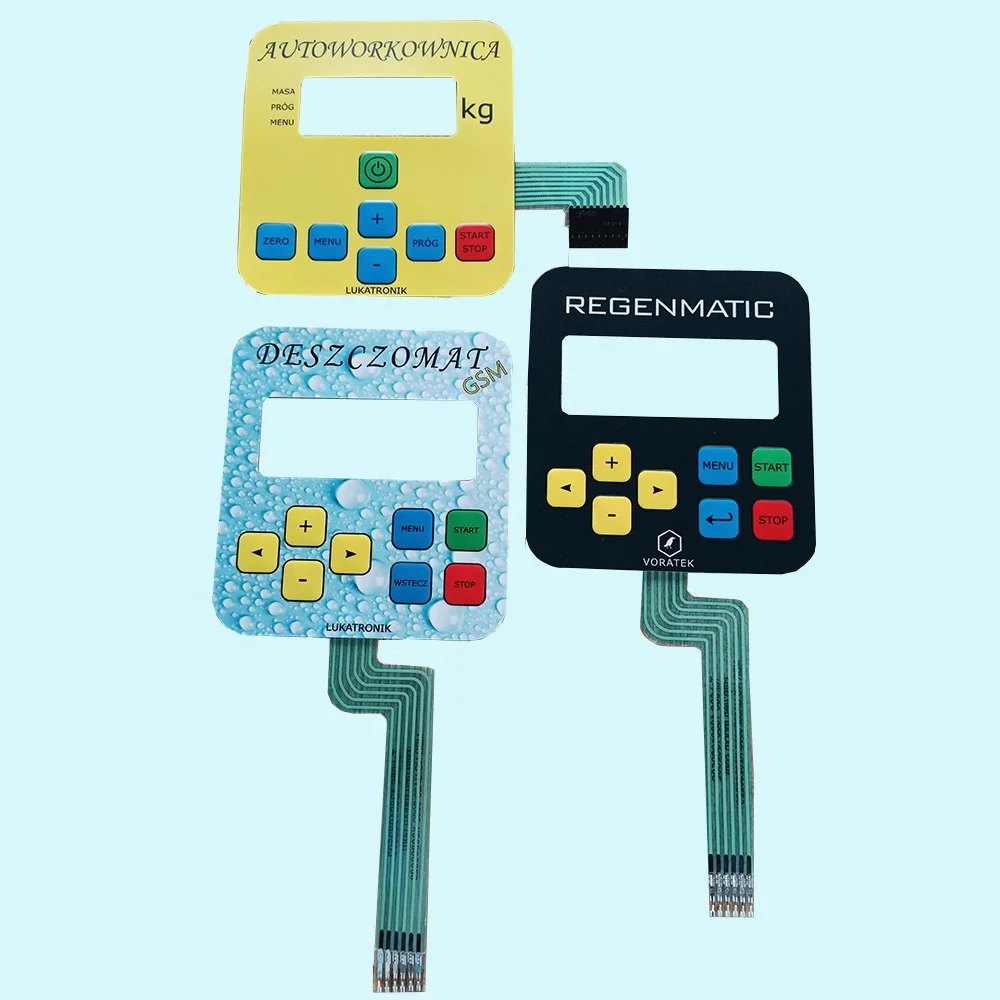Why Membrane Switches are Ideal for Durability and Performance
Wiki Article
Comprehending Membrane Layer Changes: The Trick to Long Lasting and Dependable Controls

What Are Membrane Buttons?
Membrane switches are an advanced remedy in the realm of interface modern technology, incorporating functionality and design effortlessly. These tools act as an interface in between users and electronic systems, integrating several elements into a small style. Commonly created from adaptable, slim layers of products, membrane layer buttons are made to reply to touch, making it possible for users to interact with equipment and digital tools properly.The key components of a membrane layer button include a printed circuit layer, graphic overlay, and a spacer layer that prevents unintended activation. The graphic overlay can be tailored to mirror brand name identification or individual preferences, enhancing aesthetic appeals while making sure functionality. Membrane buttons are commonly utilized in different applications, consisting of clinical gadgets, customer electronics, and commercial devices, owing to their durability and resistance to environmental factors such as dampness and dirt.
One of the essential advantages of membrane layer switches is their ability to withstand damage, making them excellent for high-traffic atmospheres. Additionally, they are light-weight and need minimal room, permitting ingenious designs in item advancement. In general, membrane changes represent a efficient and sensible option for modern-day electronic user interfaces, marrying technology with user-centric style concepts.
Exactly How Membrane Layer Changes Job
The procedure of membrane changes joints on a simple yet effective system that converts user input into electronic signals. When a customer presses the button, the top layer deforms, enabling a conductive component in the circuit layer to make call with a corresponding conductive pad on the underside of the graphic overlay.The style of membrane layer switches can differ, but they commonly integrate domes or tactile elements to give feedback to the user, enhancing the general experience - membrane switch. The products utilized in membrane layer buttons, such as polyester or polycarbonate, add to their resilience and resistance to environmental elements, including wetness and dirt. The printed circuits are generally encapsulated, which protects them from wear and tear over time.
Benefits of Membrane Buttons

In addition, membrane layer buttons are understood for their longevity. Created from robust materials, they are resistant to dust, moisture, and physical wear, which substantially prolongs their life-span contrasted to typical mechanical buttons. This durability makes them particularly suitable for high-traffic environments and applications requiring longevity.
Another significant benefit is the ease of cleaning and upkeep. The smooth surface area of membrane layer changes lessens dirt build-up and is typically invulnerable to spills, making them suitable for settings that need frequent sanitization.
Moreover, membrane layer buttons use a structured profile, resulting in a thinner design that can be incorporated right into different devices without adding mass. This function not only enhances the aesthetic charm yet also adds to an extra ergonomic item style.
Applications of Membrane Buttons
User-friendly and functional, membrane layer switches locate applications throughout a large range of sectors, including medical tools, consumer electronics, and commercial equipment. In the clinical area, these switches are integral to gadgets such as diagnostic tools, individual monitoring systems, and mixture pumps, where reliability and convenience of cleaning are critical. Their capacity to endure harsh atmospheres and maintain capability makes them optimal for such applications.
In customer electronic devices, membrane buttons are made use of in products click reference like microwaves, cleaning machines, and push-button controls - membrane switch. Their streamlined design permits instinctive interface, improving the total user experience while supplying resilience and resistance to tear and put on
Commercial equipment also gains from membrane layer buttons, particularly in control panels for machinery and automation systems. These buttons supply protection against dust and dampness, making certain consistent performance in difficult settings. Their adjustable attributes permit suppliers to customize them to specific functional demands, boosting performance and functionality.
Choosing the Right Membrane Switch
When selecting a membrane button, it is necessary to consider various factors that affect efficiency and viability for specific applications. The main factors to consider consist of ecological conditions, tactile comments, durability, and style specs.
First, evaluate the operating setting; buttons subjected to wetness, chemicals, or extreme temperatures call for specific materials to make certain longevity and functionality. Next, examine the demand for responsive responses. Depending on individual communication, some applications may gain from a responsive feedback to verify activation, while others might like a non-tactile layout for visual factors.
Longevity is another important factor; membrane layer switches need to be made to stand up to regular usage, impacts, and abrasion. Guarantee the picked switch can withstand the expected lifecycle, look at here now specifically in high-usage scenarios.

Verdict
To conclude, membrane layer switches over act as vital parts in the design of long lasting and reputable control systems across different markets. Their compact design, incorporated with durable construction and customizable functions, improves user communication while ensuring long life popular settings. The versatility of membrane changes permits customized options that meet specific operational demands, strengthening their importance in modern innovation. As industries proceed to progress, the importance of integrating reliable membrane layer button services can not be overemphasized.
Membrane changes represent a critical element of contemporary user interface design, blending capability with resilience in different applications.Membrane switches are a sophisticated solution in the world of individual interface technology, integrating functionality and layout seamlessly. Usually built from versatile, slim layers of materials, membrane layer buttons are made to respond to touch, allowing individuals to connect with equipment and electronic gadgets efficiently.
The layout of membrane layer switches can differ, however they frequently integrate domes or responsive elements to give feedback to the customer, enhancing the total experience.In verdict, membrane changes offer as necessary components in the layout of trusted and resilient control systems throughout numerous sectors.
Report this wiki page